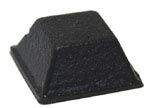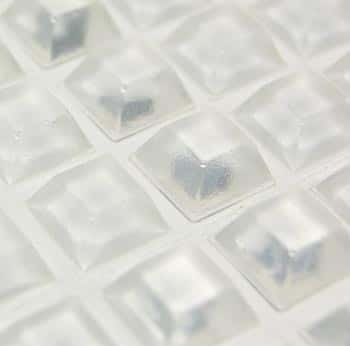Rubber feet have many different features and applications for the home, the workshop or in the manufacturing process. Here are some common features of the rubber bumpers that West Florida Components has on hand:
- low abrasion

- superb skid resistance
- easy to apply – just peel and stick
- does not stain or mar
- can absorb shocks and vibrations
- crack resistant
- is recognized by UL
You can use adhesive rubber feet in many different applications. Some of the most common are:
Sound dampening and spacers for cabinet doors, drawers and lids
For those purposes, these are some of the suggested self-adhesive rubber bumpers to use:
Medium clear cylindrical (round) rubber feet
Small clear cylindrical rubber feet
Medium black hemispherical rubber feet
Small black hemispherical rubber feet
Small clear hemispherical rubber feet
As feet on the bottom of household appliances, office equipment, telephones, scales, clocks, speakers, computers, and other devices
Medium black cylindrical (round) rubber feet
Medium clear hemispherical rubber feet
Large black hemispherical rubber feet
Medium clear square rubber feet
For the back of picture frames and hung mirrors
Medium clear square rubber feet
Medium black square rubber feet

